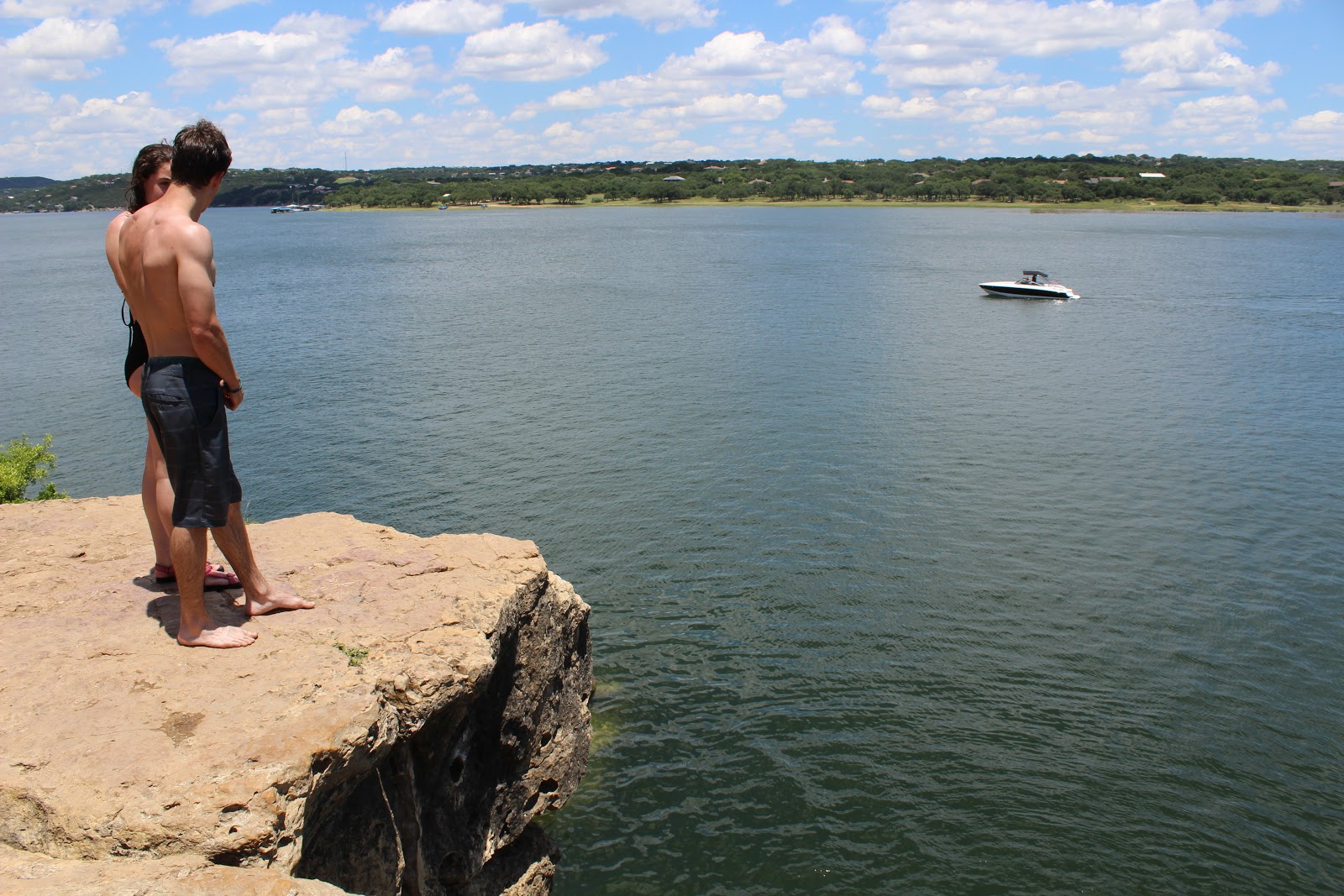Top Five Cliff Jumping Spots

Austin might not get as much attention on Instagram as some of the cliffs or beaches one would see in Hawaii or Australia, but don’t underestimate your home town. Tucked away in the corners of Austin sits some of the best cliff jumping destinations the Lone Star State has to offer. With jumps from 10 to 45 feet, here are some spots that are sure to get your adrenaline pumping, in our nearby central-Texas backyard.
The Do’s and Don’ts of Cliff Jumping!
Pace Bend Park (Spicewood)
Pace Bend Park was once known back in the day as Paleface, probably because that is exactly what happens to cliff jumpers when their toes curl over the edge of Pace Bend’s 45-foot cliff (depending on the water level of the lake). With a $10 entrance fee into the park, Pace Bend offers camping in addition to some of the best cliffs in Texas. Post jump information: unfortunately, there is not a ladder to get back up so jumpers have the option to A) climb back up the rocks or B) swim a few hundred yards around the cliffs to a beach area. Pro tip: wear shoes! This is one of the higher cliffs to jump in Austin so the impact will be stronger. Also, zebra mussels are no friend to naked feet (I learned the hard way).
Devil’s Waterhole – Inks Lake (Burnet)
About an hour northwest of Austin in Burnet, the Devil’s Watering hole is a scenic spot in the corner of Inks Lake. With scenic waterfalls and hiking trails, the Devil’s Waterhole is a great place to rest after a day of exploring. Since the water level of Inks Lake typically stays constant throughout the year, cliffs at the Devil’s Waterhole are guaranteed to be as high as 20 feet. If you’re in a mixed group of those who enjoy the occasional adrenaline kick and those who enjoy floating on the water, the watering hole can satisfy both parties.
Pedernales Falls State Park (Johnson City)
This secret spot is for the inner-explorer looking to find a lesser-populated destination off the beaten path. Occupying just over eight square miles, Pedernales State Park is located in Dripping Springs and has several different trails hikers can explore. One trail in particular, Wolf Mountain Trail, is home to some scenic lagoons where hikers can take a dip in the falls or even indulge in a cliff jump or two. Pro tip: the best cliff jumping spots require a bit of free climbing!
Starnes Island – Lake Travis (Austin)
Resting in the center of Lake Travis, Starnes Island, also known to some as Rattlesnake Island, is a popular cliff jumping spot: only at the right water level. Starnes Island is a hub for party barges and boats drop anchor and float for a few hours with occasional mingling and drinking. In the prime time of summer, the island can be surrounded with boats and engulfed with happy humans looking to relax under the summer sun. If the adrenaline junkie inside you is needing a good dose of excitement, many people climb to the higher rocks to jump into the water. But be careful of water levels and make sure that the area of water you are jumping into is deep enough for a safe landing.
Jacob’s Well (Wimberley)
This may not strike you as one of the main cliff jumping spots around Austin, but once you get up on to those rocks above a hole in the ground that is just 12 feet wide, it will surely make your adrenaline spike. Jacobs Well, located 38 miles southwest of Austin in Wimberley, is an artesian spring featuring an underwater cave. According to the Visit Wimberley website, the cave descends 23 feet before it continues at an angle for a maximum of 140 feet. There are a couple restrictions that deem the deeper areas unsafe for divers, but for jumpers who aren’t keen on descending more than 20 feet, Jacobs Well is a prime spot. Like many watering holes in Austin, Jacob’s Well Natural Area requires summer visitors to secure a reservation in order to visit. Reservations can be found and made online. Pro tip: Try to make your reservation for in the middle of the day when the sun is at its highest point so you can see deeper into the cave.
ALSO: Austinites, jump at your own risk! Always remember to practice safety and be sure water levels are high enough to ensure a safe jump.






